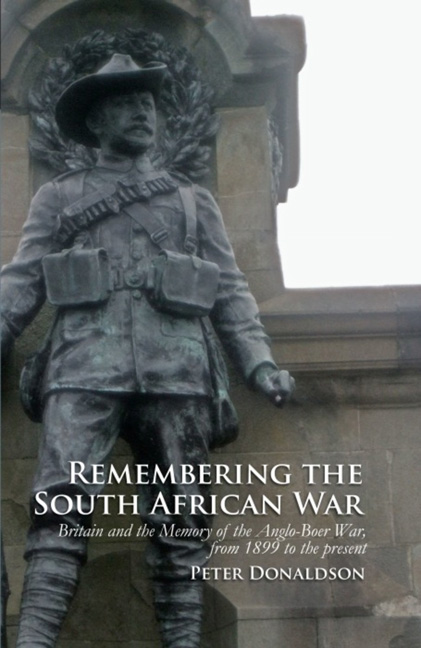 Remembering the South African War
Remembering the South African War Book contents
- Frontmatter
- Dedication
- Contents
- List of Illustrations
- Acknowledgements
- Introduction
- 1 Civic War Memorials: Public Pride and Private Grief
- 2 Pro Patria Mori: Remembering the Regiment
- 3 Vitai Lampada: Remembering the War in Schools
- 4 Alternative Affiliations: Remembering the War in Families, Workplaces and Places of Worship
- 5 Writing the Anglo-Boer War: Leo Amery, Frederick Maurice and the History of the South African War
- 6 Filming the War: Television, Kenneth Griffith and the Boer War
- Conclusion
- Bibliography
- Index
2 - Pro Patria Mori: Remembering the Regiment
- Frontmatter
- Dedication
- Contents
- List of Illustrations
- Acknowledgements
- Introduction
- 1 Civic War Memorials: Public Pride and Private Grief
- 2 Pro Patria Mori: Remembering the Regiment
- 3 Vitai Lampada: Remembering the War in Schools
- 4 Alternative Affiliations: Remembering the War in Families, Workplaces and Places of Worship
- 5 Writing the Anglo-Boer War: Leo Amery, Frederick Maurice and the History of the South African War
- 6 Filming the War: Television, Kenneth Griffith and the Boer War
- Conclusion
- Bibliography
- Index
Summary
THE South African War was an important moment of transition in the nature and perception of the British army. A central element in this process of change was the growth of mass literacy. Almost every British soldier had at least basic literacy skills and could write about their experiences in letters to loved ones back home. Frequently such accounts were disseminated to a wider public through local newspapers, works journals and school magazines. The soldiers were also accompanied by journalists, artists, illustrators and cinematographers. Modern technology was then used to give a public educated in popular patriotism and imperialism an on-going diet of stories and information. At the same time, the ranks of the army were swollen by a large number of volunteers, particularly from the British middle classes. This gave the army, albeit for a very short space of time, a demographic much more akin to its parent population. These trends helped the army to transform the image of the Tommy from Wellington's ‘scum of the earth’ to Kipling's salt of the earth. This chapter will explore the extent to which this shift in perception was reflected in, and even exploited by, the military authorities as they embarked on the time-honoured tradition of raising monuments to their fallen. It will explore how the, often uneasy, relationship between regulars and volunteers impacted on the memorialisation process and, thus, provide an alternative window on the debates that surrounded the structure and function of the nation's military forces on the eve of the Great War.
At regimental level the formation of an organising committee to oversee the memorialisation process was a relatively straight-forward matter. In the majority of cases, retired officers took the lead in conjunction with a smattering of serving officers. In London the Royal Artillery scheme commenced with a meeting at the Royal United Service Institute in November 1902. Former commander-in-chief of the British army and cousin of Queen Victoria, the Duke of Cambridge chaired the meeting and oversaw the creation of a committee. Retired Major-General Sir George Marshall, who had commanded the Royal Artillery during the conflict, was appointed as chairman and was joined by two other major-generals and four retired colonels…
- Type
- Chapter
- Information
- Remembering the South African WarBritain and the Memory of the Anglo-Boer War, from 1899 to the Present, pp. 47 - 80Publisher: Liverpool University PressPrint publication year: 2013


